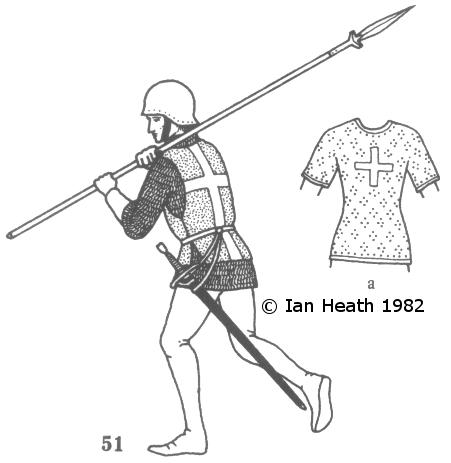Amazon Prime Student 6-month Trial Create an Amazon Wedding Registry | 
|
FRENCH INFANTRYMAN c.1450
An extract from Armies of the Middle Ages, Volume 1by Ian Heath
Amazon Prime Student 6-month Trial Create an Amazon Wedding Registry | 
|
51. FRENCH INFANTRYMAN c.1450
From the same source as figure 18, this portrays a French infantryman at the time of Formigny and Castillon, wearing the white cross that the French had adopted as their field sign in the 14th century. Its first appearance was in 1355 when troops being raised in preparation for the campaign of that year were issued with white strips to wear on their clothes in the form of distinguishing white crosses. These would have resembled 51a which comes from a ms. of 1484 where similar white crosses, presumably painted, are shown on the breast and back plates of the men-at-arms. The figure illustrated here wears a much larger cross on a green surcoat, other figures in the same source wearing blue, red and grey surcoats, not always with the cross. A source of the late-15th century depicting the Battle of Agincourt actually shows the entire French army wearing similar surcoats in red, with a slightly narrower cross. That such surcoats were also worn by men-at-arms, and even by noblemen, is well testified by a number of pictorial sources and we know, for example, that Jean, Comte de Dunois, wore a red jacket with ‘a large white cross’ at Rouen in 1449.
As with the English red cross, the French white cross was worn in addition by allied contingents such as the Scots. After the Battle of Baugé in 1421, for example, a troop of Englishmen put on white crosses and claimed they were Scots in order to make good their escape. A similar cross in black, incidentally, was worn by Breton troops in the 14th century.